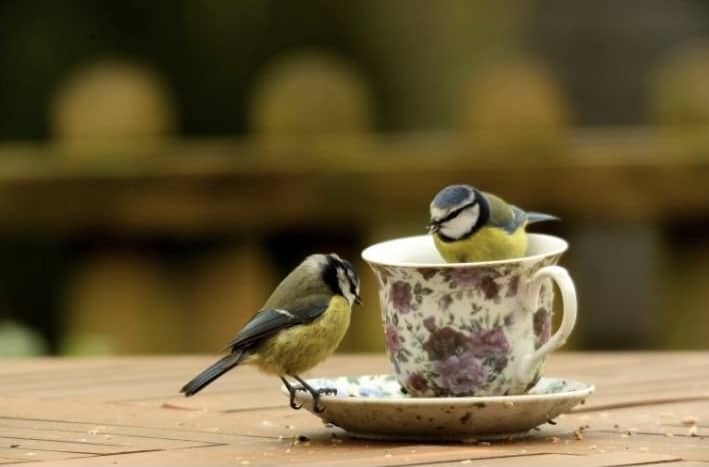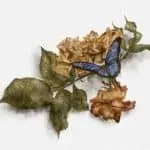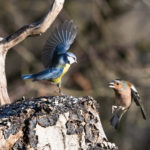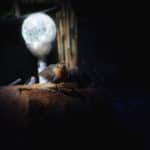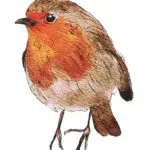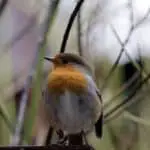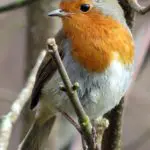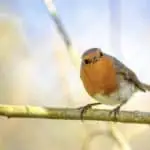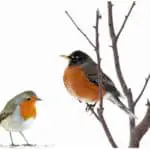Blue tits, like other garden birds, often seem to disappear in the summer months. There are a number of reasons for not seeing as many birds in summer, including their need to feed their young specific foods, their annual moult, and their desire to take advantage of seasonal food available to them elsewhere.
Towards the end of spring and at the beginning of summer, once the blue tit nestlings have hatched, you may not see so many blue tits in your garden. This could be one of a number of reasons:
- They’re Feeding Their Nestlings. The first reason is that nestling blue tits require quite a specific diet of caterpillars and insects in order to grow strong enough. This means that there is often quite a large amount of competition for a smaller quantity of food. As a result, a male or female blue tit will often have to fly further afield to find food for their young, so you may not see them around as much in your garden. A nestling blue tit may eat as many as 100 caterpillars a day – that’s a lot of caterpillars for a nest of eight to ten baby blue tits! This means that parent blue tits will spend almost all of their time locating food for their young.
- They’re Moulting. Small garden birds, in summer months, undergo an annual moult. This tends to mean that they are less visible, as they dart around in the undergrowth. Their blue and yellow markings may be less visible during this time, and they generally have less energy.
- They’re Taking Advantage Of Seasonal Food. Another reason why blue tits may seem scarce in the summer months is because they are taking advantage of seasonal fruits and berries. While they usually stick to a diet of invertebrates such as spiders, insects and caterpillars, blue tits will often seize the opportunity in the summer to feed on ripe berries and seeds in neighbouring areas.
- They Can’t Find Enough Food & Water In The Garden
Dryer days often means dryer lawns, which means fewer insects at the surface to forage. In addition to this, dry spells in the UK result in the evaporation of natural bodies of water, so make sure to keep your bird bath topped up to try and coax blue tits back to your garden!
Blue tits are generally much easier to come by in the autumn and winter months because of the reduced food available, and the need for a warmer place to stay. They can often be spotted eating from hanging bird feeders during cooler months of the year in the UK.
Blue tits are easily distinguished by their blue markings, as the name suggests. The crown, wings and tail of a blue tit are all blue in colour, and the scientific name for the blue tit is directly derived from the Latin for ‘dark blue’.
Their blue crown is bordered by white, and adult blue tits have white cheeks too. Juvenile blue tits have yellow cheeks. The eyes and cheeks of a blue tit are bordered by black lines, and their back is a yellow-green colour. Young blue tits are less yellow and more brown, and may not have developed blue markings yet. The bill of a blue tit is rounded, and is black-brown in colour. Their legs and feet are a dark blue-grey.
Blue tits are generally 12cm in length, have a wingspan of 18cm and weigh approximately 11g. A male and female blue tit are the same size, but they differ in appearance very slightly. Male blue tits are slightly more vibrant, especially under UV light.
For blue tits, breeding season runs from early-mid April until late June or early July in the UK. This means that in the spring and summer months, a female blue tit can often be seen building her nest, incubating her eggs and feeding her young until they are old enough to fly the nest in the late summer.
Blue tits are one of the garden birds that will mate for life. Unless their partner dies, a female blue tit will continue to mate with one other bird for not just a breeding season, but throughout their whole lifetime. There are estimated to be over 3.5 million pairs of breeding blue tits in the UK currently, according to research undertaken by the RSPB.
In the spring, blue tits are most commonly spotted in gardens and parks, primarily because they are preparing for the arrival of their young. The process of building a nest, laying eggs, incubating the eggs and caring for the nestlings is a process that takes between one and two months altogether.
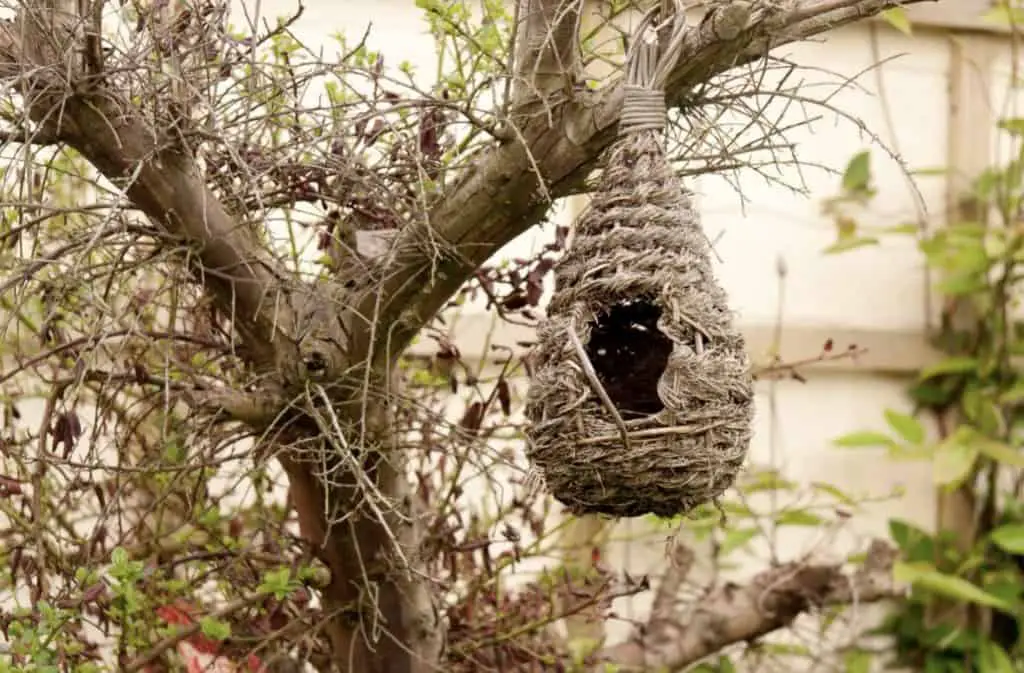
Nests are built by the female blue tit, typically in small holes in tree trunks or hedge rows. Blue tits will commonly use artificial nesting boxes too, as long as they are sufficiently high off the ground (usually two metres is high enough). Blue tits can usually be spotted in the spring building their nests: cup-shaped structures made from a combination of dried grass, dead leaves, bark and moss.
